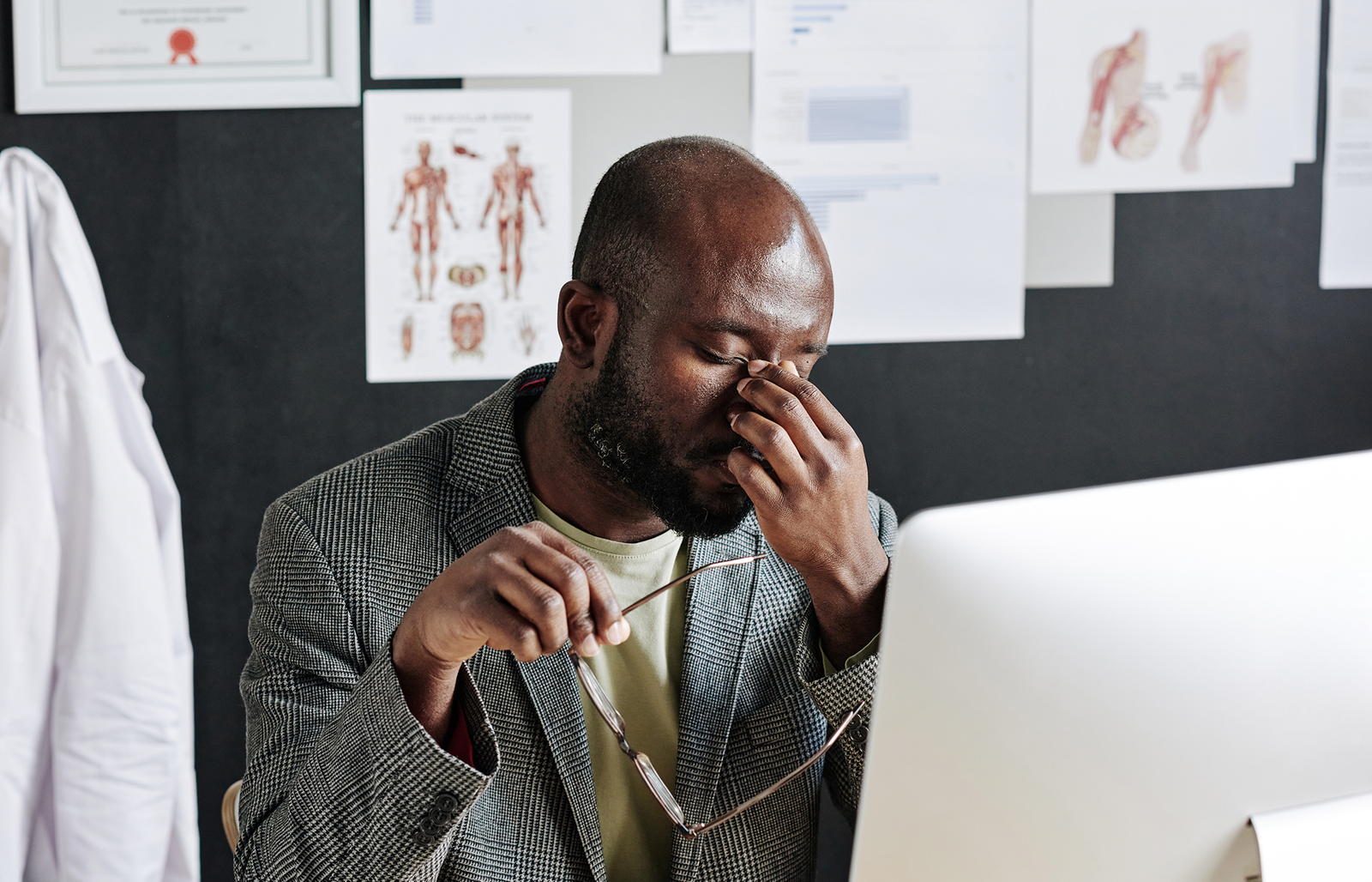Most organisations still treat ergonomics as a posture problem to be solved with a better chair, a lower desk, or a correctly placed monitor. Necessary, yes—but incomplete. The biggest gains arrive when we pair biomechanical fit with psychosocial fit: we fit the equipment to the person and we fit the work to the person. MSDs are still a leading cause of disability globally (WHO, 2021).
At a glance
• Posture‑only fixes reduce mechanical load, but ongoing pressure (pace, meetings, digital overload) keeps muscles braced and recovery delayed.
• A dual‑adjustment model (physical + psychosocial) measurably reduces discomfort, improves focus, and lowers MSD risk.
• Leadership habits (buffers, autonomy, modelling movement) convert comfort into sustainable performance.
The limits of “posture‑only” ergonomics You can position a workstation perfectly and still see rising discomfort. Why? Because pressure sustains strain. Back‑to‑back meetings, high cognitive load, limited control over pace, and a culture that frowns on breaks all drive muscle tension, static holding, shallow breathing and delayed recovery (Safe Work Australia, 2022). In short: posture solves the load you can see; psychosocial conditions drive the load you feel.
The dual‑adjustment model
- Fit the equipment to the person (biomechanical): reduce mechanical load and awkward reach; enable neutral joints and movement.
- Fit the work to the person (psychosocial): reduce excessive demands, increase autonomy and recovery, and normalise micro‑breaks so the body can reset.
These layers multiply each other: physical fit without recovery still fatigues; autonomy without physical fit still aches. Do both.
Layer 1 — Physical fit (the foundation)
• Chair → desk → screen order: Start at the bottom. Heels supported, chair height set, then desk below elbow height, then screens/windows arranged to minimise glare and neck rotation.
• The rule of elbow: Keep elbows above desk height when keying to relax shoulders and reduce neck load.
• Input devices: Neutral wrist angles; consider split/tented keyboards, alternative mice, and negative tilt to avoid extension.
• Movement built‑in: Sit–stand rhythm, micro‑pauses, and brief dynamic stretches to offset static loading (Sheedy, 2021; Jonsdottir et al., 2010).
Layer 2 — Psychosocial fit (the multiplier)
• Autonomy to adjust: Permission to stand, stretch, move camera‑off, or step away—without stigma.
• Recovery windows: 25/50‑minute meeting blocks, buffer time between calls, and protected focus periods.
• Workload & pacing: Realistic deadlines; task rotation to vary physical demand (typing‑heavy vs thinking/walking tasks).
• Cognitive‑load hygiene: Fewer back‑to‑backs; async updates where suitable; reduce notification noise.
• Social support: Leaders model movement and early reporting; managers check in on comfort, not just output.
• Behavioural nudges: Light‑touch prompts for posture shifts, eye breaks, micropauses and hydration; self‑guided discomfort checks that trigger simple adjustments.
How psychosocial factors drive biomechanical load
• High demand + low control encourages stillness and bracing; muscles hold tension longer.
• Unbroken meeting schedules remove recovery opportunities; tissues don’t re‑oxygenate; discomfort accumulates.
• Always‑on norms keep people leaning, craning and shallow‑breathing—small postural compromises repeated for hours.
Address these, and the same workstation becomes genuinely comfortable (Waddell & Burton, 2006).
Hybrid work: consistency across contexts Comfort must travel with the worker. Provide portable tools (laptop risers, external keyboards/mice), simple set‑up checklists, and the same psychosocial permissions at home and in the office—autonomy, buffers, and movement‑friendly norms.
From endurance to early action
• Normalise early reporting: Treat discomfort as useful data, not weakness.
• Make ergonomic support routine: quick self‑assessments and rapid tweaks—not waitlists (Prall & Ross, 2019).
• Use nudges: micro‑prompts in calendars or apps keep movement and posture shifts effortless.
Leadership commitments that change outcomes
- Model the behaviour: stand, stretch, schedule buffers; make comfort visible.
- Design the rhythm, not just the room: institute 25/50‑minute meetings, focus blocks, and camera‑optional norms.
- Equip and educate: provide the right hardware and the micro‑skills to adjust it fast.
- Measure what matters: track discomfort trends and adjustment uptake—not just incident rates.
Evidence snapshot
• Safe Work Australia. Model Code of Practice: Managing Psychosocial Hazards at Work.
• Waddell, G., & Burton, A. K. (2006). Is Work Good for Your Health and Well‑being? UK DWP.
• WHO (2021). Musculoskeletal conditions—fact sheet.
• Jonsdottir, I. H. et al. (2010). Physical activity, stress and recovery. Preventive Medicine.
• Prall, J., & Ross, M. (2019). Workplace ergonomics and MSD prevention. Journal of Exercise Rehabilitation.
• Sheedy, J. (2021). Digital work, visual ergonomics and micro‑breaks. Occupational Vision.


